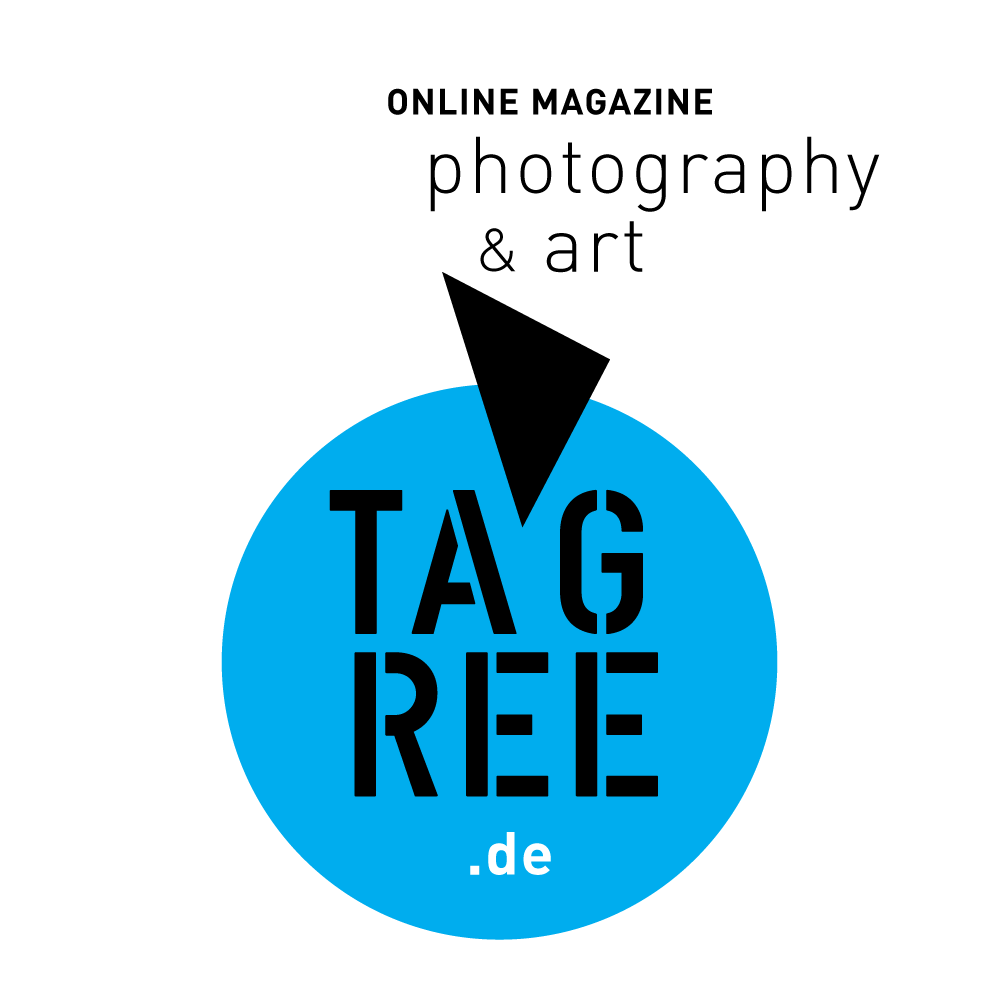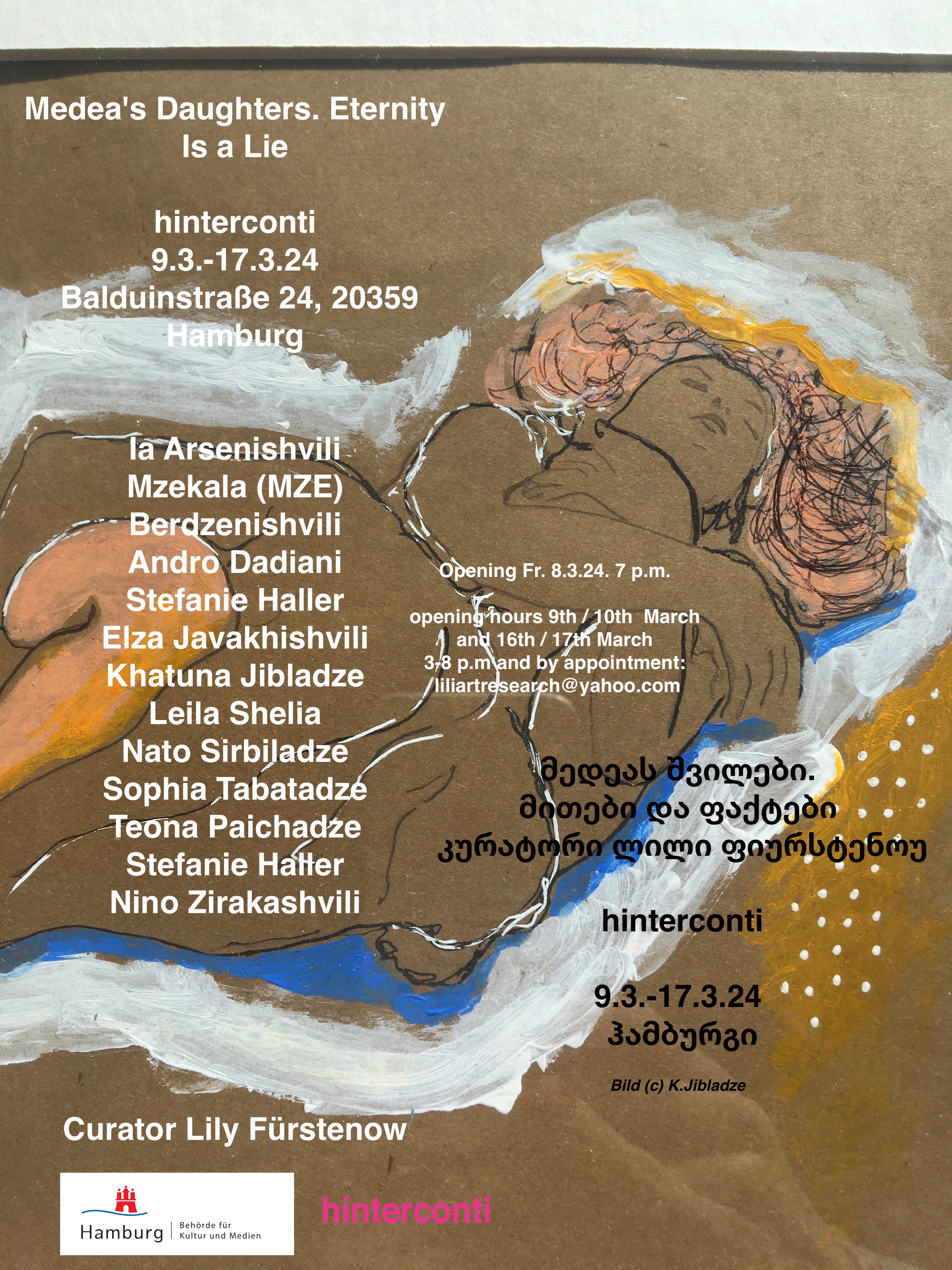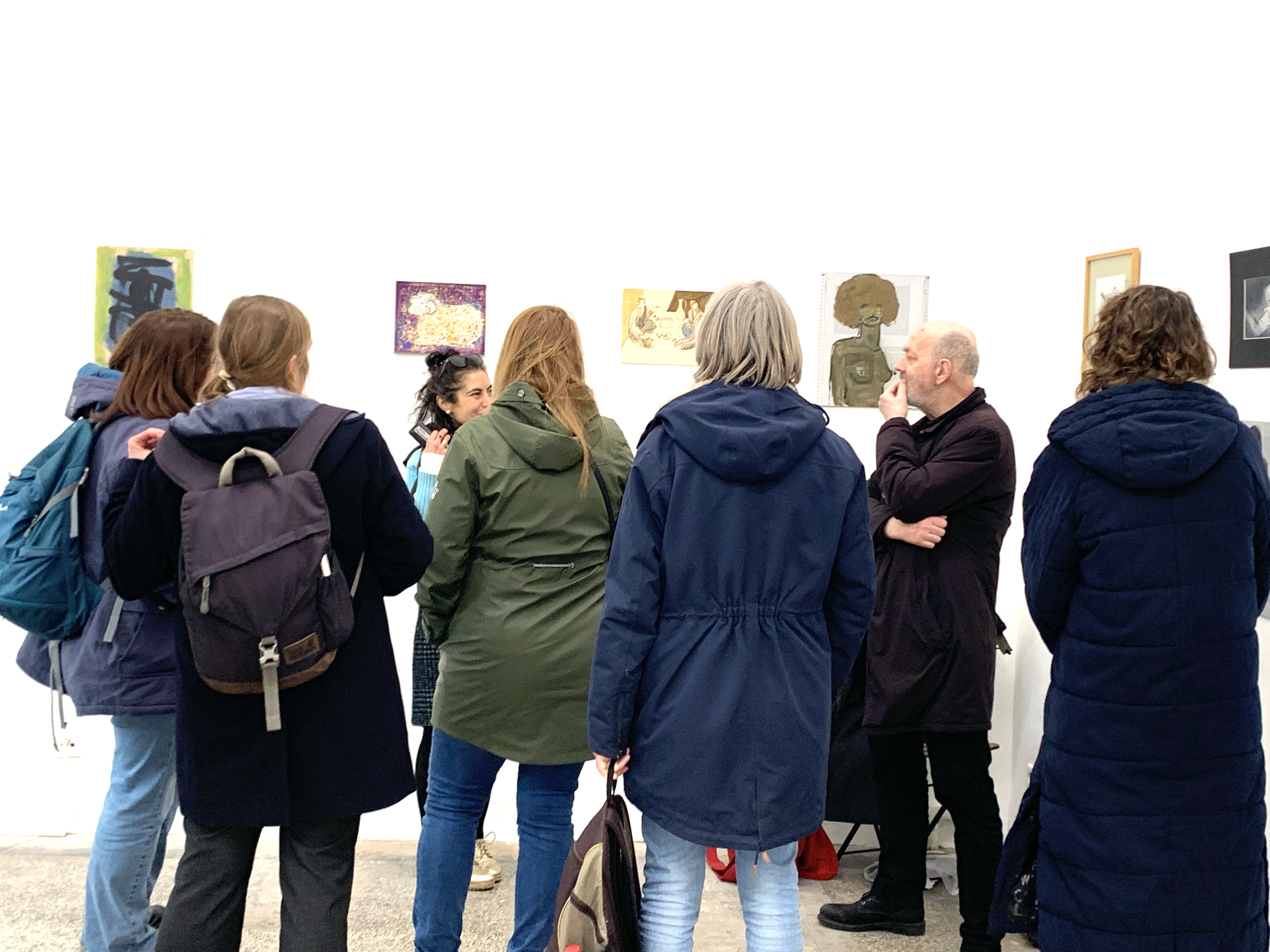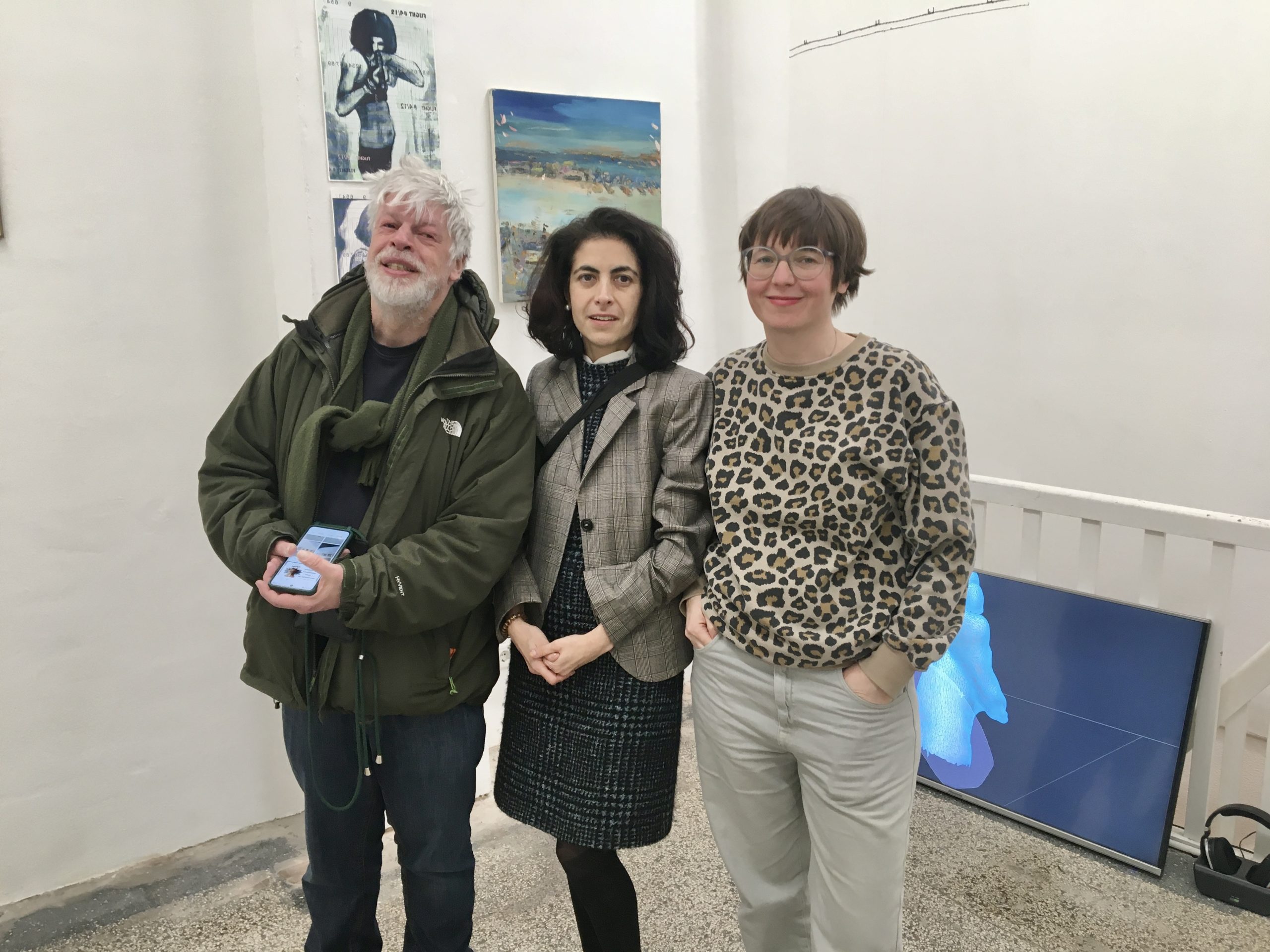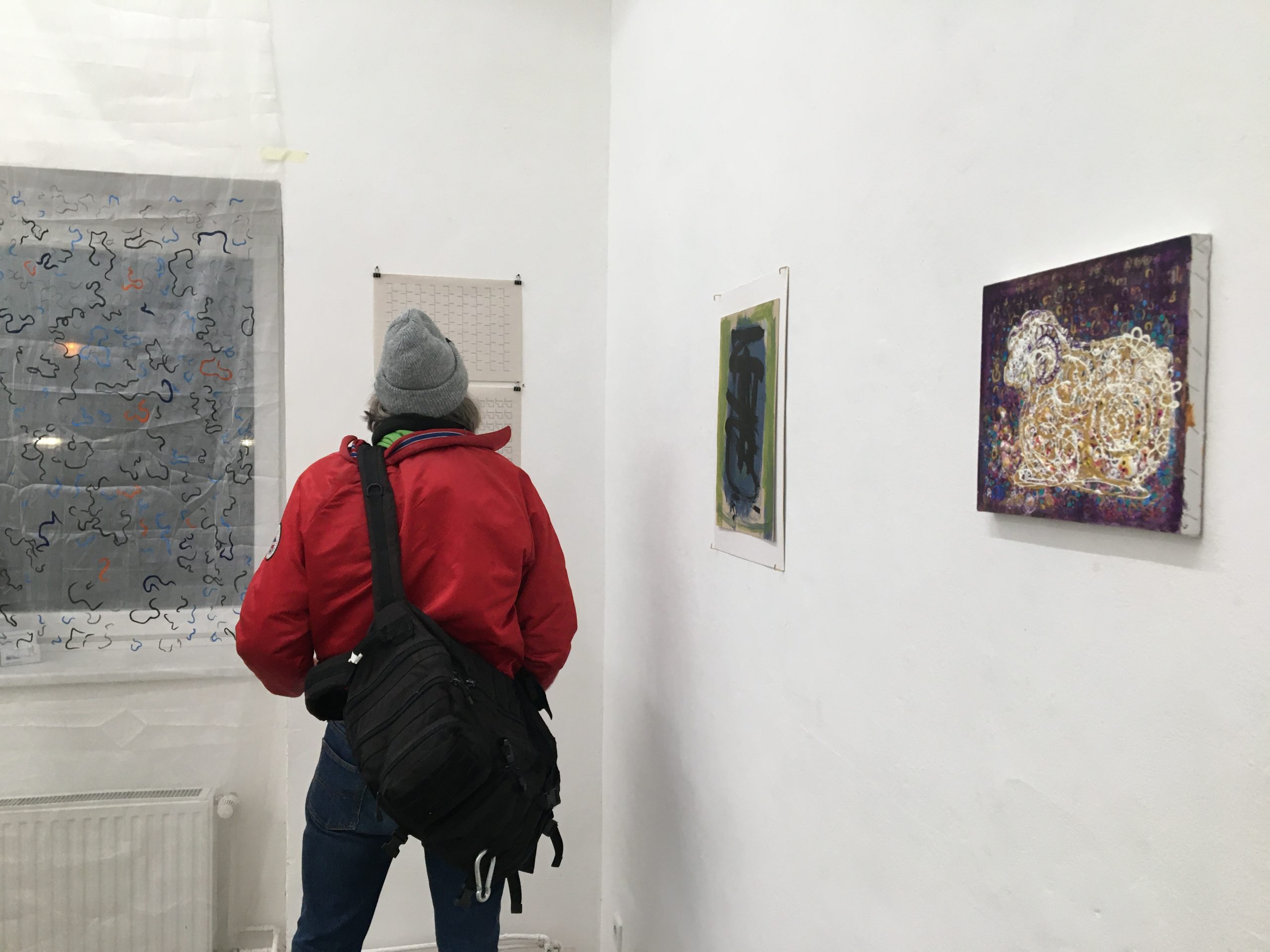Curator Lily Fürstenow
Medea´s daughters. Eternity is a lie.
Die Ausstellung „Medeas Töchter. Die Ewigkeit ist eine Lüge“ ermöglicht eine neue, unkonventionelle Lesart des Medea-Mythos aus der Antike. Die Ausstellung zeigt eine Auswahl von Werken zeitgenössischer georgischer Künstlerinnen sowie künstlerische Positionen aus Deutschland, die den weiblichen Blick in den Mittelpunkt stellen und die umstrittene Medea von unterschiedliche Perspektiven: als verratene Frau, die Liebende, als Mörderin, Zauberin und Heilerin analysieren. Anders als in der antiken griechischen Tragödie von Euripides wird Medea in der georgischen Folklore und mündlichen Überlieferung als Personifizierung mütterlicher Weiblichkeit, als Fürsorgerin und Heilerin gesehen, die mit magischen Kräften aus der Natur ausgestattet ist. Georgien, heute ein geopolitisch recht unbedeutendes Land an der Peripherie Europas und Asiens, ist zufälligerweise die Wiege der europäischen Zivilisation, ein Land, das für seine Weinbau berühmt ist, an der Kreuzung antiker Handelsrouten liegt und die Sage nach über reiche natürliche Quellen wie Gold und Silber verfügte, auf deren Suche Jason und seine Mannschaft in das ehemalige Königreich Kolchis (heute West-Georgien) segelten, um den mythischen Schatz – das Goldene Vlies – zu erlangen.
Jetzt, Jahrhunderte später, als das Gold und die mythischen Königreiche längst verschwunden sind, bleibt die Frage: Welche Bedeutung hat das archetypische Bild der Medea für uns heute? Georgischen Frauen sind von all den wirtschaftlichen, sozialen, politischen und militärischen Krisen, die sich seit dem Fall der Berliner Mauer im so genannten ehemaligen Osten ereignet haben, stark betroffen. Die Idee, die Schicksale der Frauen im heutigen Georgien hier und heute zu rekapitulieren und visuell zu analysieren, erscheint daher mehr als angebracht. „Medeas Töchter“ verweist metaphorisch auf Frauen in der Kunst in historischer Perspektive aller Epochen. Jede der ausgewählten künstlerischen Positionen hat eine andere Vision und ein anderes Verständnis des Mythos und seiner Protagonistinnen.
Participating artists:
Ia Arsenishvili
Mzekala (MZE) Berdzenishvili
Andro Dadiani
Stefanie Haller
Elza Javakhishvili
Khatuna Jibladze
Leila Shelia
Nato Sirbiladze
Sophia Tabatadze
Teona Paichadze
Nino Zirakashvili
Exhibition “Medea’s Daughters. Eternity Is a Lie” allows for a new unconventional reading of the Medea myth dating back to antiquity. Showing a selection of artworks by contemporary Georgian women artists together with artistic positions from Germany that offer the female gaze perspective, this exhibition analyses controversial Medea as a betrayed woman, a lover, a murderer, a sorceress and a healer. Unlike the ancient Greek tragedy by Euripides Georgian folklore and oral tradition sees Medea as a personification of motherly femininity, carer and healer vested with magic powers coming from nature. Georgia, now geo-politically quite an insignificant country on the periphery of Europe and Asia happens to be the cradle of European civilisation, a country famous for its wine-making traditions, on the cross-roads of ancient trade routs and vested with rich natural sources like gold and silver, in search of which Jason and his crew sailed off to the former Kingdom of Colchis (now Western Georgia) to obtain the mythic treasure – the golden fleece.
Now, centuries after when the gold and the mythic kingdoms are long gone the question still remains: What relevance does Medea’s archetypal image have for us today? Georgian women have been severely affected by all the economic, social, political and military crises that have been happening in the so-called former East since the fall of the Berlin Wall. So the idea to recapitulate and visually analyse the fates of women in contemporary Georgia here and now seems more than relevant. “Medea’s Daughters” metaphorically refers to women in arts in historical perspective of all epochs. Each of the selected artistic positions has a different vision and understanding of the myth and its protagonists.
Medea’s Daughters. Eternity Is a Lie
Almost 30 years after the fall of the Berlin Wall the presence of women artists from the so-called Former East is very insignificant on the German art scenes. The perception of East European art created by women from the Caucaus or the Balcans for example, to name but a few, is often based on stereotypes that would shove their work into some dusty culture curiosities category adding some exaggerated exotization to their oeuvre or assigning them into the so-called “multi-culti” variety as a set of artistic production that is perceived as diversity fostering variety yet not really acknowledged as an equally important and essential part of contemporary European artistic terrain.
Presenting in this exhibition the whole spectrum of East European female art would be a task far more extensive than we can currently afford but an attempt to present a set of artistic positions by contemporary female artists from Georgia and former Yugoslavia chosen according to the aspects of the element of critique in their works representing the female gaze and perspective would be of enormous interest for all involved, because the themes of continuities, influences and contradictions in the female artistic production by women artists from the countries in question are essential to trace and to better understand contemporary European cultural climate especially now in the post-pandemic time, torn by war ravaging in the Ukraine, renewed conflicts in the Karabach region resulting in refugees and economic instabilities. The reason why, we have concentrated, on women artists from the Caucasus region and former Yugoslavia, is, among others, that these regions seem to be of enormous geopolitical importance since the conflicts that still persist e.g. in the Karabach region and the bloodshed during the military conflict in former Yugoslavia are some of the most devastating and tragic ones in Europe and have irrevocably divided the local communities.
Female aspect has been conventionally characterised as changeable, varying, fluctuating and shifting throughout history of mainly men driven philosophical discourse as opposed to the male aspect conventionally perceived as constant, unchanging, invariable. Mythologically women would be compared to the ever changing moon and the darker shadowy realm whereas the male aspect would be more related to the sun, clarity and light. One would presume that the days of middle age philosophical ruminations are long gone yet astonishingly enough the older centuries old patterns of thinking persist and form cultural subconscious. In our prosaic contemporary age of digital innovation and technological progress reality changes quicker than one would wish to imagine the metaphor of constant shifting would is as essential as ever. East European and especially Georgian and Caucasus region women artists had to adjust and adept themselves to the embracing and overwhelming changes that the falls of the Berlin Wall and the vanquishing of the former Soviet Union brought with itself. Drastically changing working conditions, gender gap, severe social injustices, military conflicts and civil wars as well as colonial exploitations became permanent conditions under which women artists had to work. In spite of a variety of exceptionally talented artists who used to produce and still carry on with their artistic practice the cultural terrain of the so-called former east is practically unexplored and very seldom covered in the exhibitions in the Western countries, that are the only ones who have access to profitable art markets and international recognition. Therefore it is very important at this point in history to set the process of introducing new artistic positions from the region in questions.
As already mentioned above notions like stability, continuity, eternity have turned out to be flawed and distorted throughout historical perspective – empires have disappeared, state borders have been rearranged, populations have moved as a result of military conflicts e.g. refugees from Abhazia, Ossetia, conflicts in the former Yugoslavia. Likewise the myths of eternal love, beauty and unbreakable community bonds have proved to be false. It is the ephemerity that is the main essence of beauty, it is the shot-lived that makes the intensity of emotion so exceptional, and likewise it is the notion of departure that makes one value the relationships within the community so affectedly. Rarely is there a better proof of it than in the myth of Medea and Jason.
Medea was the princess of the Kolchis – an Kingdom situated in the West of Georgia on the Black Sea Coast. And the Kolchis owned the legendary treasure – the Golden Fleece that the Argonauts headed by Jason set out to obtain. The enterprise conceived by the Greeks had no chance of success unless a miracle would happen. And actually they were lucky, because Medea the daughter of the Kolchian King fell in love with Jason and betrayed her father by helping Jason to obtain the Golden Fleece. They eventually married and got two children and lived happily till their happiness was ruined because Jason left Medea, who in a fit of rage and jealousy killed her kids. It is not very well known but it’s a fact that Medea was not only the affect driven murderer of her children but also a witch and a healer. Interestingly enough Georgia is one of the few countries where Medea is perceived as a positive character invested with magic powers of curing, caring and healing. It’s a symbol of apothekers’ shops in the city streets and is often represented in painting as a mature young woman surrounded with plants, a chalice and a snake symbolising medicine. Her gaze is steady and calm, she looks steadily into the brew cooling up in the vessel on fire and the snake coiling around obeys her powers and serves her in her healing mission. That’s how Georgian women perceive themselves – healers, curers, care-takers. The dreams and fantasies of eternal love and beauty have turned out vain and groundless. The expectations of devotion and faithfulness imposed by convention and male variety of moral is obsolete. And finally with the onslaught of the digital age and the AI the female gaze has merged with the machine as in the interactive installations of Berlin artist Linda Werner, who has developed a special program that using the respective apps can evaluate the psycho-type of a person according to their facial features and physiognomy. Anyone who sets herself in front of her Screen art work will get an evaluation as to character, inner qualities and even mental abilities all written on screen within minutes.
I would metaphorically suggest that all these talented women artists whose artistic practice is based on the centuries old tradition of myth and visual culture as well as on the groundbreaking achievements of the new technologies are symbolically Medea’s daughters who bring different perspective, healing and cure to us by their art through emotional transformative powers – the so called female gaze. With all the above mentioned in mind we would suggest the following artistic positions:
Georgia Today Newspaper Review of Medea’s Daughters. March 14/24
No Results Found
The page you requested could not be found. Try refining your search, or use the navigation above to locate the post.
